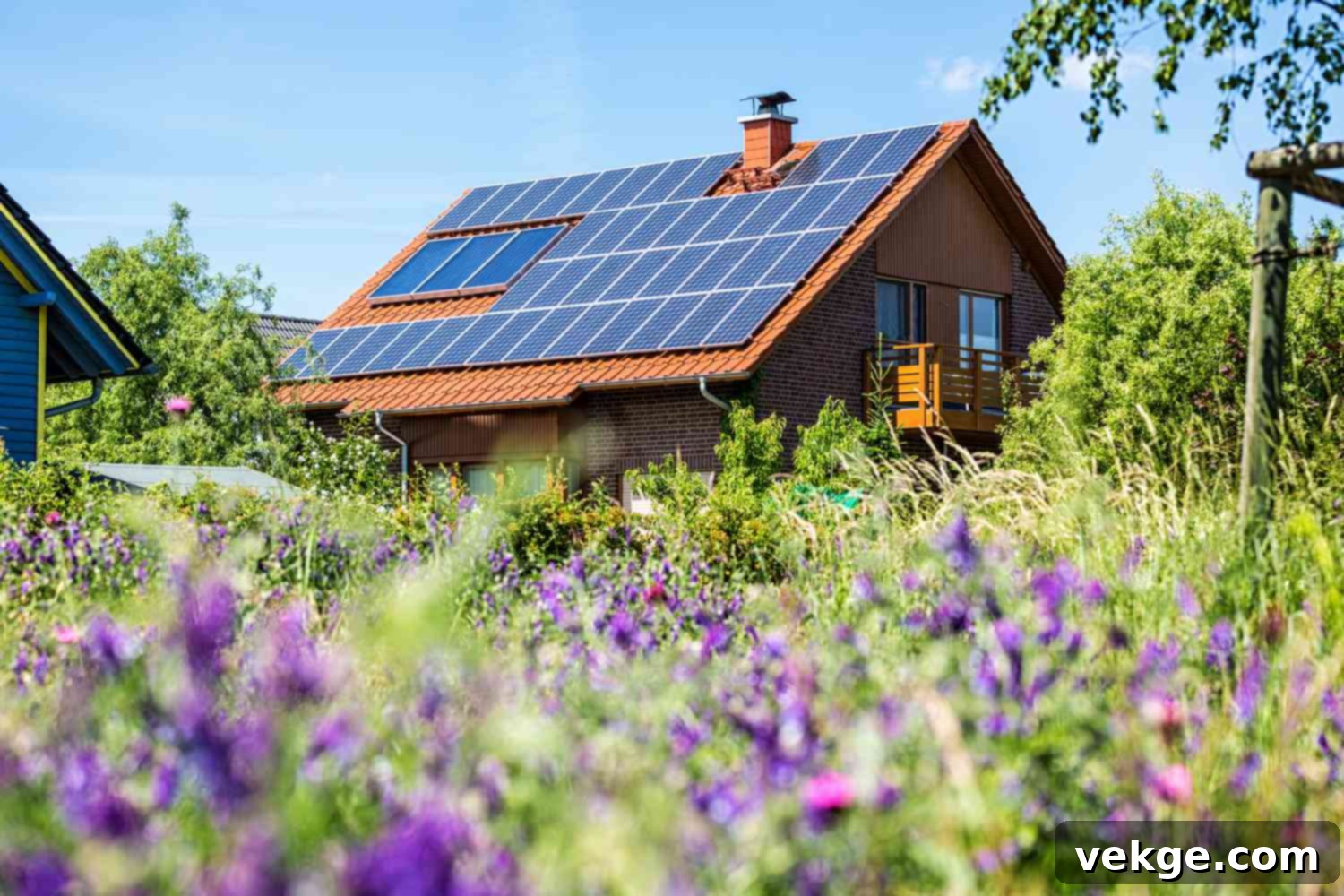The Future of Green Living: Uncovering 2024’s Top Sustainable Home Design and Building Innovations
As we navigate through 2024, the pursuit of sustainability has firmly anchored itself at the forefront of our collective consciousness, particularly within the sanctity of our homes. With environmental awareness reaching unprecedented levels, homeowners, architects, and designers alike are actively seeking innovative—and often understated—methods to seamlessly integrate eco-conscious practices into every facet of home construction and interior design. This article delves into the latest groundbreaking trends, moving far beyond the conventional notions of solar panels and recycling bins, to reveal how modern homes are truly transforming into bastions of green living.
Smart Water Management Systems: Optimizing Every Drop

In an era where water scarcity is an escalating global concern, innovative water management systems are no longer just a luxury but a necessity, taking center stage in the design of sustainable homes. Envision a residence where water usage is not merely minimized but meticulously optimized through sophisticated technology. The cutting-edge trends in 2024 extend far beyond the installation of low-flow faucets and showerheads, embracing comprehensive solutions for water conservation.
These advanced systems are engineered to collect, treat, and efficiently reuse greywater—the relatively clean wastewater generated from baths, sinks, and laundry facilities—thereby significantly reducing the demand for fresh, potable water. Equipped with an array of smart sensors, these systems continuously monitor water quality and usage patterns in real-time. This invaluable data empowers homeowners to make informed adjustments to their habits, swiftly identify potential leaks, and drastically minimize overall water waste. Furthermore, integrated rainwater harvesting systems are becoming increasingly common, capturing precipitation for irrigation or even internal non-potable uses after filtration. This holistic approach to water management represents a monumental leap forward in residential sustainability, ensuring that every precious drop is utilized judiciously. By fostering a deep connection between modern living conveniences and responsible environmental stewardship, these technologies empower homeowners to play an active role in global water conservation efforts, turning their homes into true models of eco-efficiency.
Advanced Building Materials: Foundations of a Greener Future
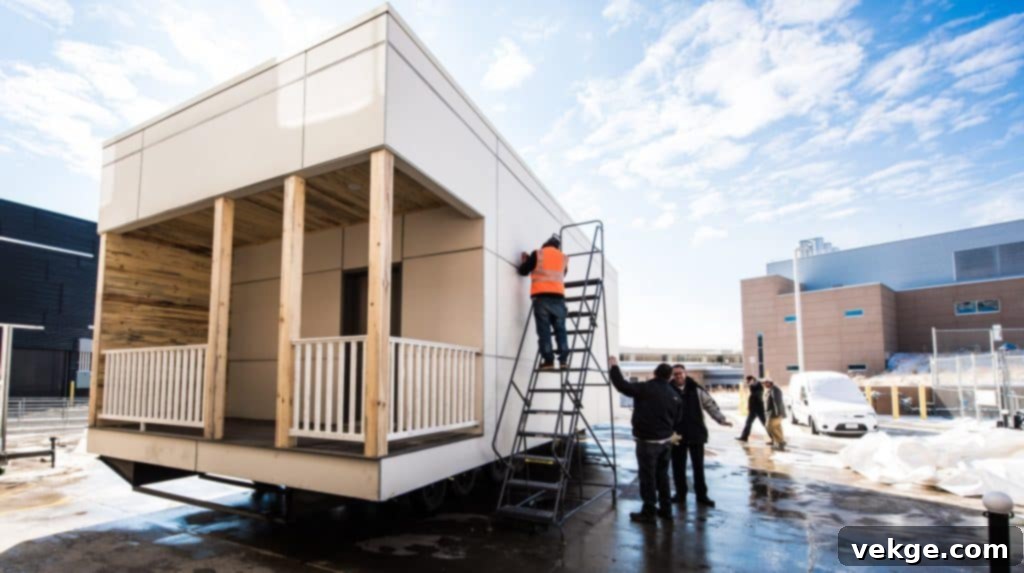
The selection of materials used in constructing and renovating our homes plays an absolutely pivotal role in determining their long-term sustainability and environmental impact. The year 2024 has witnessed a significant surge in the adoption of advanced, eco-friendly building materials that are not only exceptionally durable but also actively contribute to a healthier planet. This includes everything from innovative insulation solutions to structural components that reduce waste and energy consumption.
For instance, bio-based insulators, ingeniously crafted from agricultural waste products such as hemp, straw, or mycelium, offer superior thermal performance while being renewable and biodegradable. These materials effectively keep homes warm in winter and cool in summer, significantly reducing heating and cooling demands. Another revolutionary development is self-healing concrete, which incorporates micro-capsules containing bacteria that produce limestone to fill cracks, thereby dramatically extending the lifespan of structures and minimizing the need for resource-intensive repairs. Beyond these, materials with low volatile organic compounds (VOCs), recycled content (like recycled steel, plastic lumber, or glass countertops), and rapidly renewable resources (bamboo, cork) are becoming standard choices for conscientious builders.
A further game-changer in sustainable construction is the widespread adoption of adaptive reuse practices. This approach involves giving old buildings a new lease on life, carefully preserving their historical character and embodied energy while retrofitting them with modern energy-efficient technologies and sustainable materials. This not only conserves vast amounts of raw materials and reduces landfill waste but also significantly lowers the carbon footprint typically associated with new construction. By thoughtfully selecting and innovating with these materials, we are not just building houses; we are cultivating a holistic approach to eco-conscious living that extends from the very foundations of our homes to the broader architectural landscape, truly cementing the principles of gardening for sustainability within our built environments.
The Rise of Biophilic Design: Connecting Homes with Nature
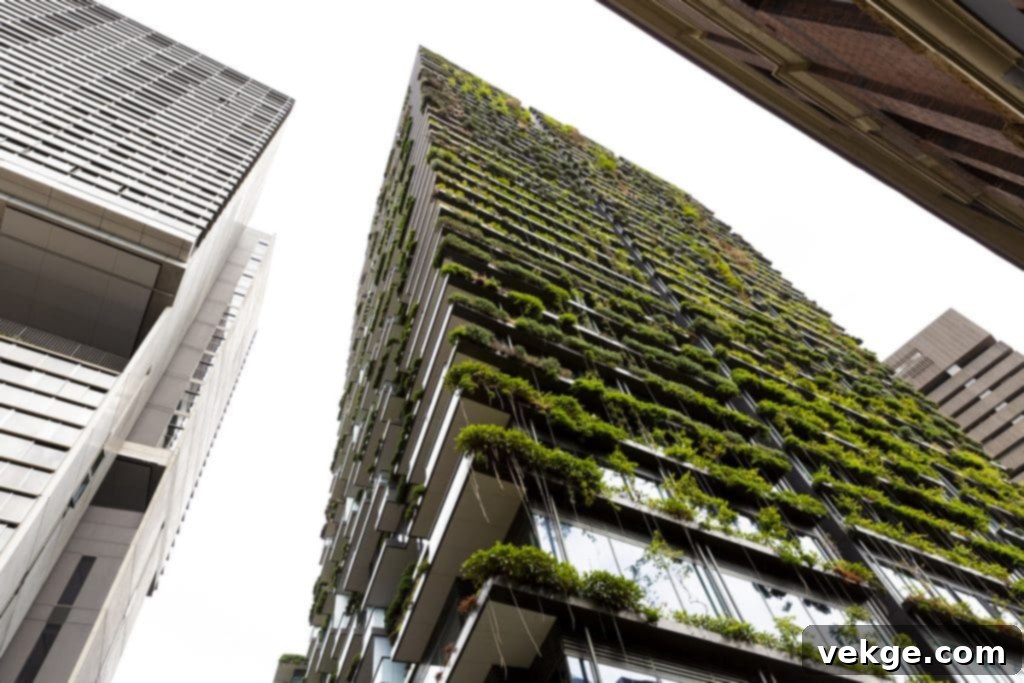
Biophilic design has emerged as a profoundly transformative trend, revolutionizing how we create living spaces that are not only aesthetically captivating but also significantly enhance the physical and mental well-being of their inhabitants and, by extension, the planet. This innovative design philosophy is deeply rooted in the innate human tendency to connect with nature, seeking to integrate natural elements and processes directly into our indoor environments, thereby blurring the traditional lines between the indoors and the great outdoors.
Imagine the serenity of living walls, vibrant tapestries of greenery that not only purify the air and regulate indoor humidity but also provide a calming visual focus. Picture intelligent natural lighting schemes that strategically maximize daylight penetration, reducing the reliance on artificial illumination and saving energy. Consider the widespread use of sustainably sourced, natural materials like reclaimed wood, bamboo, cork, and various types of stone, which bring the tactile and visual essence of the earth directly into our homes. Beyond aesthetics, biophilic design actively promotes health and wellness by fostering a serene, restorative, and nurturing environment that can reduce stress, improve cognitive function, and enhance overall mood. It intrinsically encourages the use of renewable materials and energy-efficient designs, such as passive ventilation and optimal window placement, which further contribute to a reduced environmental footprint.
By consciously fostering a direct and continuous connection with the natural world, biophilic design serves as a powerful reminder of our inherent role as stewards of the earth. It gently, yet firmly, urges us to construct and inhabit our living spaces in complete harmony with nature, promoting a symbiotic relationship that benefits both humanity and the ecological systems upon which we depend. This approach truly brings the outdoors in, creating healthy, inspiring, and inherently sustainable homes.
Energy Generation and Storage Revolution: Towards Home Energy Independence
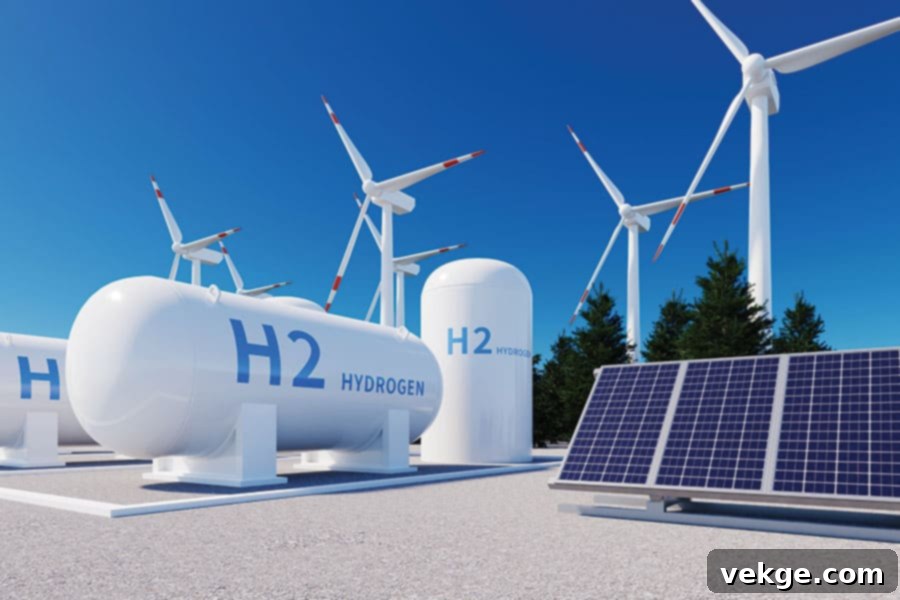
The latest innovations in residential energy systems are fundamentally transforming homes into proactive centers of clean energy generation and highly efficient storage. We are currently witnessing an accelerating integration of aesthetically pleasing photovoltaic solar tiles that seamlessly blend with the architectural design of a home’s exterior, replacing traditional roofing materials. Alongside these, residential wind turbines have evolved, becoming significantly more compact, quieter, and visually less intrusive, making them increasingly viable for integration into suburban and even urban residential areas. Geothermal systems, which tap into the earth’s stable temperature for heating and cooling, are also gaining traction for their incredible efficiency.
However, the true game-changer in this energy revolution lies in the profound advancements in battery storage technology. Modern, high-capacity batteries are now capable of storing excess energy generated by solar panels or wind turbines during periods of high production (e.g., sunny afternoons) for later use. This stored energy can then power homes during peak demand hours, at night, or during grid outages, drastically reducing—and in many cases, eliminating—reliance on the conventional electricity grid. This newfound energy independence allows homeowners to become almost entirely self-sufficient, significantly minimizing their carbon footprint and contributing to a more resilient energy infrastructure.
Furthermore, sophisticated smart home energy management systems are now equipped with AI capabilities to learn a household’s unique energy usage patterns. These intelligent systems can then optimize energy consumption in real-time, deciding when to draw power from renewable sources, when to use stored battery power, and when to sparingly tap into the grid. This not only enhances overall energy efficiency but also translates into substantial savings on energy bills, rendering sustainable living both environmentally friendly and economically attractive. The synergy of efficient generation and smart storage paves the way for a future where homes are active participants in a decentralized, clean energy ecosystem.
Revolutionizing Home Maintenance: Sustainable Upkeep for a Healthier Home
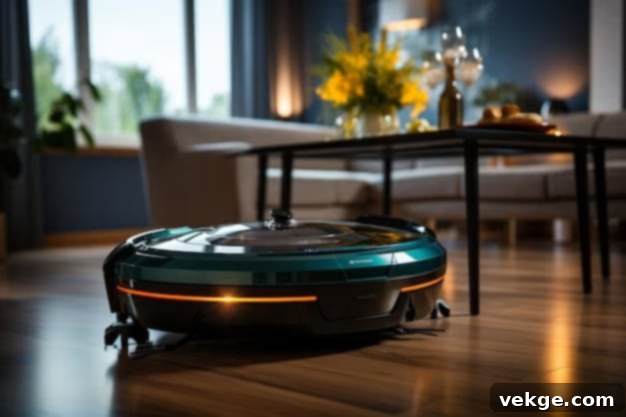
In 2024, the paradigm of home maintenance is undergoing a profound transformation, moving beyond mere cleanliness to embrace a holistic, eco-conscious practice centered on reducing chemical use, conserving precious water resources, and minimizing waste. This shift is rapidly gaining momentum as homeowners increasingly prioritize the health of their families and the planet.
The surge towards natural cleaning agents, formulated with biodegradable, non-toxic, and plant-derived ingredients, is at the forefront of this revolution. These innovative products promise a sparkling clean home without the harsh environmental toll and health risks associated with traditional chemical-laden cleaners. Beyond cleaning solutions, innovations extend to cleaning tools and devices themselves. The market is now flooded with highly efficient, durable, and reusable alternatives to disposable items, from microfiber cloths that reduce the need for paper towels to advanced vacuum cleaners with superior filtration and energy efficiency. These changes collectively lead to a significant reduction in landfill contributions and resource consumption.
Water conservation techniques in daily cleaning routines are also taking center stage. New devices that utilize micro-amounts of water, or even employ steam and ionized air for cleaning, are proving to be remarkably effective while being far more sustainable than conventional water-intensive methods. This approach not only conserves valuable water resources but also challenges established norms, encouraging homeowners to fundamentally rethink how they maintain their living spaces, leading to greener and more responsible practices.
This evolving conversation around sustainability in home maintenance naturally brings us to the topic of everyday consumables, particularly paper towels. The prevalent trend is decidedly moving towards products crafted from recycled materials, offering a significantly greener alternative to their virgin wood pulp counterparts. Opting for paper towels made from recycled fibers represents a crucial step in combating deforestation, reducing the energy consumption associated with paper production, and diverting waste from landfills. This conscious choice reflects a broader and deeper commitment to sustainability, underscoring the vital importance of reusing resources and minimizing waste in every aspect of our daily lives, reinforcing a commitment to sustainable choices for our homes and the planet.
As we thoughtfully embrace these transformative changes and integrate these innovative sustainable practices, we are actively paving the way for a future where sustainability is not just an option but an ingrained principle, embedded into every fiber of home construction, innovative design, and daily living. The revolution in sustainable living is not a distant dream; it is here, actively transforming our homes into eco-friendly havens that unequivocally promise a brighter, healthier, and greener future for us all.
